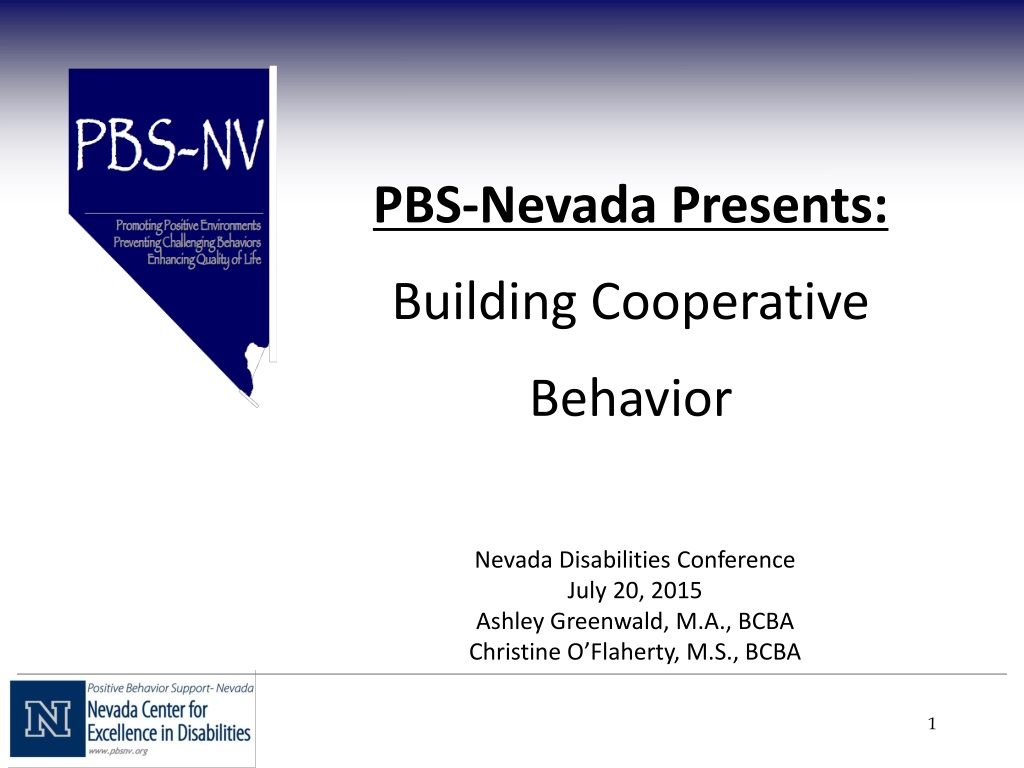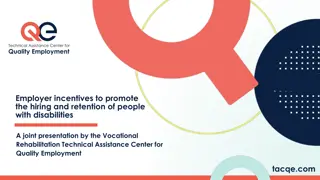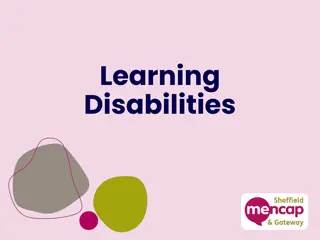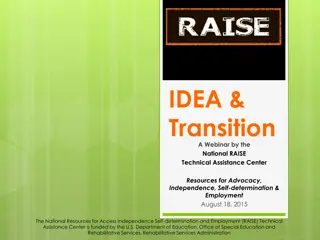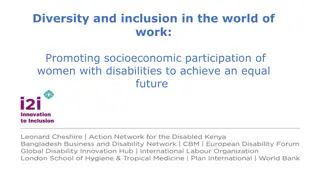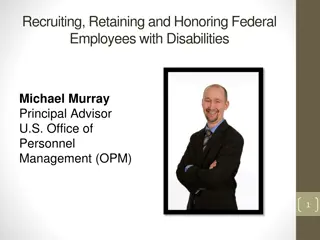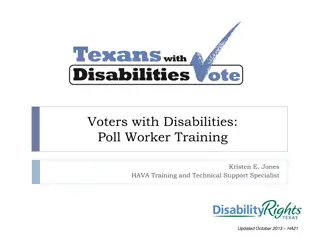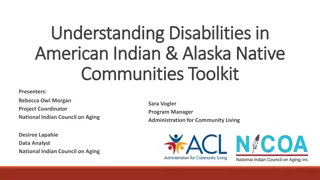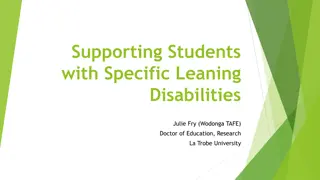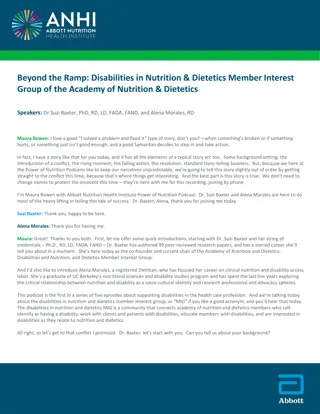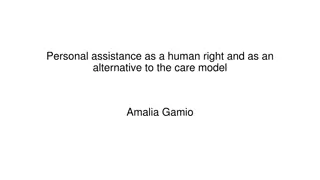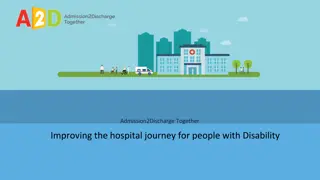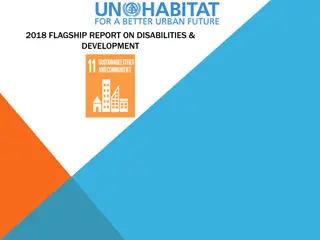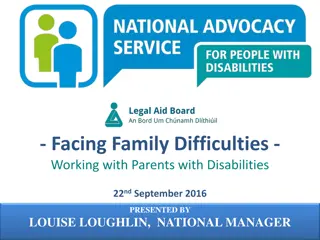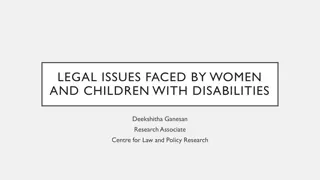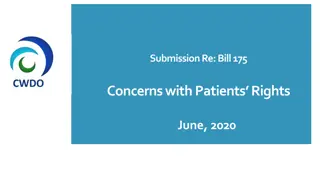Understanding and Managing Behavior in Individuals with Disabilities
Explore the concepts of behavior management and cooperative learning in individuals with disabilities as presented at the Nevada Disabilities Conference. Learn about effective tools, common myths, and truths surrounding behaviors, and discover alternative approaches to treating behaviors. Gain insights into behavior manifestations and strategies for promoting positive behavior in diverse settings.
- Behavior management
- Disabilities conference
- Positive behavior interventions
- Learning strategies
- Support services
Download Presentation

Please find below an Image/Link to download the presentation.
The content on the website is provided AS IS for your information and personal use only. It may not be sold, licensed, or shared on other websites without obtaining consent from the author. Download presentation by click this link. If you encounter any issues during the download, it is possible that the publisher has removed the file from their server.
E N D
Presentation Transcript
PBS-Nevada Presents: Building Cooperative Behavior Nevada Disabilities Conference July 20, 2015 Ashley Greenwald, M.A., BCBA Christine O Flaherty, M.S., BCBA 1
Nevada PBIS Nevada Positive Behavior Interventions and Support Technical Assistance Center Project areas: Individual & family behavior support (state funded) School-Wide PBS (federally funded) Organization/Agency PBS PBS-NV Individual and Family Support is a statewide collaboration between: Fund for Healthy Nevada (PBS funding statutory) Nevada Aging & Disability Services Nevada Center for Excellence in Disabilities at UNR
The Tools You Will Learn Today 1. Arrange the environment 2. Offer choices 3. Stay close 4. Pivot 5. Use reinforcement
What is Behavior? but the most important thing is what happens AFTER behavior! Everything a person does is behavior- thoughts, feelings, and actions. It can be observed and measured! It is a result of past and present experiences. Building Cooperative Learning
Ways In Which Acting-out Behavior Manifests Running away Physical/Verbal aggression Verbal abuse Serious confrontations Threats Sexually Vandalism Defiance Non-Compliance Withdrawn (Bos & Vaughn, 2002; Colvin, 2004)
Behavior Myths and Truths Myths Truths S/He is just doing that: S/He is trying to: to annoy me communicate something to be naughty get what they want to be mean because of a disability S/He doesn t know any other way Kids do well if they can Kids do well if they want to
How do we Normally Treat Behavior? Respond once a negative behavior occurs Ignore those that are doing the right thing Develop treatments around consequences Attribute the problem behavior to the person
How are Behaviors Learned? Consequence Antecedent Behavior
Functions of Behavior Attention Get Tangible (objects, activities) Behavior Get Away Sensory 10
The Behavior Scale Desired Behavior Problem Behavior
Start Tipping The Scale With Supportive Environments! Undesirable Behaviors Desirable Behaviors 13
Creating Optimal Environments Gather information Think ahead Be Prepared Create predictable routines Offer choices*
Examples Of Arranging The Environment! Pick the best example A) setting up group activities before the children arrive so they can go straight to something B) Having a variety of activities available so that there is more likely to be something that everyone will enjoy C) Ensuring that there aren't places that aren't easily supervised available to the kids
Keep Tipping The Scale With Choices! Undesirable Behaviors Desirable Behaviors 17
Offer Choices We all like to have some say about what we do and when! What are some choices you made today?
Choices Can Increase the likelihood of complying with instructions Build self-determination Gives the individual a sense of control over their environment
Why We Tend to Limit Choices Bad choices could be harmful Not knowing how to offer choices to individuals who have limited language, limited understanding Response time in making choices 20
Choice Examples What you want: Go play ball Choice: What do you want to do? You can either play a game or go outside. What you want: Go play and make friends Choice: Do you want to try art with Mike or play ball with Sara? What you want: Go to the bathroom Choice: Do you want to go to the bathroom now or when we leave to the fieldtrip
Pick the best example Examples Of Choice! A) The choices should all be acceptable B) The choices should be as open as possible in a situation C) The choices shouldn't be aversive
Keep tipping the scale with Stay Close! Undesirable Behaviors Desirable Behaviors 23 Building Cooperative Learning
Stay Close What is Stay Close ? Attending to your assigned group by frequently: being near, being attentive, just talking, and listening
Some Steps for Stay Close Staying calm Neutral voice Positive interactions Listening Light touch Use empathy 25
Positive Cycle Caregiver Individual Less Angry Less Aggressive More Positive More Minding Have More Fun Feel More Secure Happier Recognize good behavior and ignore bad Show lots of positivity and attention Are less angry Have less power struggles Have more fun Are happier!
Examples of Stay Close! Pick the best example A) Stay genuine B) Promotes open discussion so when something important comes up you are more likely to be informed about it C) The more involved you are the better you will be able to anticipate and avoid possible problems through environmental arrangement
Lets Tip the Scales with Pivot! Undesirable Behaviors Desirable Behaviors 28
Pivot When we withhold our attention during the occurrence of junk by turning to someone something else, we call this pivoting. When we see junk, we turn to desirable behavior or activities. 29
Steps to Pivot 1. Do not say anything about the junk behavior! Examples: Do not say stop that now! or quit doing that! 30
Steps to Pivot 2. Do not do anything to react to the junk behavior Examples: Rolling your eyes, stomping out of the room, and crossing your arms. 31
Steps to Pivot 3. Actively attend to another person, or activity Examples: praise another individual for behaving appropriately 32
Steps to Pivot 4. Provide REINFORCEMENT for the appropriate behavior to the individual who displayed junk as soon as you see appropriate behavior. Examples: praise, high five, item and privilege 33 Building Cooperative Learning
Remember... Stay Cool 34 Building Cooperative Learning
Whats An Example Of Junk Behavior? Pick the best example A) Whining B) Eye rolling C) Complaining D) All the above
Really Tip the Scales with Reinforcement! Undesirable Behaviors Desirable Behaviors 36 Building Cooperative Learning
Increase Positive Interactions Catch the individual being good! Provide positive attention and praise more often than negative (or punitive) attention. Have fun!
What is Praise? Praise looks like Praise sounds like Wink Smile Pat on the back High five Others?? You are playing so well together! Initiate positive interactions: Asking if assistance is required Asking to join in! Providing positive feedback regarding appropriate behavior 5:1 Ratio of positive to negative statements*
5:1 Ratio Individuals should experience positive interactions (ratio of 5 positives for every 1 negative) Positive Interactions= Praise statements and Encouragement statements Negative Interactions= Corrective statements Neutral Interactions = Instructional statements
Redirect then Reinforce While you re looking for children to catch being good, you may find children making the wrong choices then what? Instead of attending to the inappropriate behavior, redirect the child to a more appropriate activity or behavior Tell them what to do instead, rather than what NOT to do!
Pick the best example Positive Reinforcement Is: A) Introducing something following a behavior that gets you more of that behavior B) It should be something the individual likes, not just something you do C) If you are seeing more of the behavior you don't have a reinforcer
PBS-NV Family Support Workshops Tier I = Universal strategies Tier II = Targeted interventions Tier III = Individualized, function-based, comprehensive supports PBS 101 Potty Pros Picky Eaters Routines and Transitions Functional Communication Training Addressing Challenging Behavior Funded by DHHS Fund for Healthy Nevada
Thank You! We hope you enjoyed this training! Visit our website for additional resources and to explore our topic specific courses! www.nevadapbis.org Like us on Facebook! https://www.facebook.com/pbsnv 45
